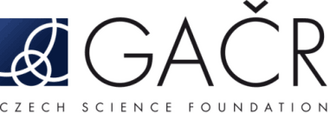IT4Innovations is a research and development centre with strong international links, it is involved in all activities of EuroHPC Joint Undertaking and in a number of prestigious international organisations (PRACE, ETP4HPC, EUDAT, BDVA, EOSC).
IT4Innovations is currently a National Centre of Competence for HPC, a member of the MaX and Space Centres of Excellence and a partner in more than 10 other international projects of Horizon 2020, Horizon Europe or Digital Europe, coordinating the EXA4MIND project. It also collaborates on the European Space Agency (ESA) project called AIOPEN (Platform Extensions with AI Capabilities).
The implementation of national projects financially supported by the Ministry of Education, Youth and Sports, the Ministry of Industry and Trade, the Ministry of the Interior, the Grant Agency of the Czech Republic or the Technology Agency of the Czech Republic is also important. Some of the projects are carried out in the form of contract research with commercial entities.
TOP 5 IT4INnovations PROJEcTs

2023–2026
Project ID: LM2023054
Provider: Large Infrastructures for Research, Experimental Development and Innovation project
e-INFRA CZ is a unique e-infrastructure for research, development, and innovationin the Czech Republic, which represents a fully transparent environment providingcomplex capacities and resources for scientific data transfer, storage, and process-ing to all entities focused on research, development, and innovation across sectors.
It creates a communication, information, storage, and computing platform for re-search, development, and innovation both at the national and international levels. Italso provides an extensive and comprehensive portfolio of ICT services for conduct-ing modern research, development and innovation.
The main components of e-INFRA CZ include:
→ high-performance national communication infrastructure,
→ national grid and cloud infrastructure,
→ most powerful and state-of-the-art supercomputing systems in the Czech Republic,
→ high-capacity data storage facilities.
Other tools and services, such as access control to ICT resources, tools to supportremote cooperation, and tools to ensure secure communication and data protec-tion, are also an essential part and an added value of this infrastructure, contribut-ing to its efficient and diverse use.

EXA4MIND
EXtreme Analytics for MINing Data
2023–2025
Project ID: 101092944
EXA4MIND project will build an Extreme Data platform which brings together data storage systems and powerful computing infrastructures by implementing novel automated data management and effective data staging. The project is driven by four application cases from molecular dynamics, advanced driver assistance systems, smart agri-viticulture and health and social Big Data. The EXA4MIND proposes innovative solutions to complex everyday data-processing problems and addresses critical challenges like data analytics, Machine Learning and Artificial Intelligence at scale; effectively democratising access to and enabling connectivity across EU supercomputing centres.

EuroCC 2
National Competence Centres in the framework of EuroHPC Phase 2
2023–2025
Project ID: 101101903
The mission of EuroCC 2 is to continue the establishment of a network of National Competence Centres (NCC) in the most efficient way while continuing to address the differences in the maturity of HPC deployment in Europe. The main task of the overall activity is to support national centres in setting up their operational frameworks while accessing and making the most of the experience and expertise currently available at national and European levels. The main goal is to drive collaboration, and exchange of best practices and knowledge at the European level and to accelerate the improvement of national and thus European capabilities.

European Open Science Cloud Czech Republic
2023–2028
Project ID: CZ.02.01.01/00/22_004/0007682
The European Open Science Cloud (EOSC) is a European initiative focused on developing infrastructures supporting open science practices in research data management. It offers facilities for storing and sharing so-called FAIR research data – findable, accessible, interoperable, and reusable. The EOSC-CZ project is the implementation of the EOSC initiative in the Czech Republic, which aims to create a national node of this European initiative and promote good practice in research data management across scientific communities. Implementing National Data Infrastructures will create a common platform for sharing, managing, and accessing data and computing resources for research purposes. The NDI will support scientific and multidisciplinary research activities and include various scientific fields and disciplines.
More information here.
MAterials design at the eXascale
2023–2026
Project ID: 101093374
Materials simulations have become one of the most intensive and fast-growing domains for high-performance computing worldwide, with a recognized European leadership in developing and innovating the ecosystem of quantum simulation codes. MAX project will target these lighthouse codes to address the challenges and leverage the opportunities arising from future exascale and post-exascale architectures, and to offer powerful paths to discovery and innovation serving both scientific and industrial applications.
OTHER IT4INNOVATIONS PROJECTS

2025–2027
Project ID: 25-14529L
Provider: GACR
The aim of the project is to search for novel materials for magnetic refrigeration based on a large magneto- and barocaloric effects using the synergy of the theoretical ab-initio calculations and experimental materials-type studies. A special attention will be paid to the study of the thermal expansion in search of materials exhibiting negative thermal expansion (NTE) and magnetoelastic phase transition that may enhance the MCE/BCE due to the low thermal hysteresis, distinctive change of magnetic order and lattice parameters. The research will be conducted within international cooperation of experimental teams in PL and theoretical one from CZ.

2024–2027
Project ID: 24-11388I
Provider: GACR
Material elastic properties are important for practical application. Nevertheless, for magnetic materials, high complexity emerges because of the coupling of magnetic and elastic properties. The postdoc project of Jakub Šebesta aims at the generalization of the spin-lattice dynamic approach beyond the scope of cubic materials. This model represents a highly efficient scheme to cover magnetoelastic behavior, such as magnetostriction or magnetoacoustic effects. However, the current approach applies only to simple structures. The generalization will allow one to study and explain magnetoelasticity in more complicated compounds and alloys, i.e. providing more useful materials with high application potential. Namely, the generalization of the magnetic terms in spin-lattice dynamic for tetragonal structures is suggested. Further, the derivation of sound wave propagation in lower symmetry is proposed. Finally, the influence of high-order correction in elastic and magnetoelasticity will be considered.

2022–2025
Project ID: 22-35410K
Provider: GACR
Permanent magnets are a key technology for modern society with applications in air conditioning, mobility, and power generation. In state-of-the-art permanent magnets, the atomic-scale defects, like in the grain boundary phase, have the most significant effects on the macroscopic properties (e.g., coercivity). In this project, a quantitative theory of coercivity, in terms of the local atomic structure, the spatial variation of the intrinsic magnetic properties, and the physical micro-structure of the magnet will be studied. To achieve this goal, a unique scheme of simulation procedures will be developed between quantum mechanical calculations, atomic spin dynamics, and micromagnetic continuum simulations. Magnetic properties will, therefore, be newly taken into account on the atomic scale, i.e., with the inclusion of atomic interface defects and grain boundaries. This will avoid the use of former assumptions in the use of magnetic properties from solid phases. This will allow a multi-scale model to be built to determine the magnetic properties of real materials.

2022–2024
Project ID: 22-22322S
Provider: GACR
The recently discovered superconductivity in the nearly magnetic compound UTe2 boosted interest in unconventional superconductors. The results published so far indicate multiple superconducting phases and magnetic ordering induced by applying an external magnetic field and/or hydrostatic pressure. The revealed analogies of the behaviour of UTe2 with the properties of ferromagnetic superconductors URhGe, UCoGe and UGe2 may help develop a unified theory of unconventional superconductivity. The project will bring together experimentalists (Charles University) and theorists (VSB-TUO) to collaborate intensively in a comprehensive investigation of a complex phase diagram of UTe2 and related compounds employing a yet unseen combination of experimental measurements and state-of-the-art theoretical ab initio calculations of thermal expansion, magnetostriction, heat capacity, magnetisation, elastic constants, and electrical transport of unconventional superconductors under multi extreme conditions.

2020–2022
Project ID: 20-18392S
Provider: GAČR
The project dealt with the physical principles that will increase the phase stability region between the immiscibility and melting temperatures using an example of desired alloys with a self-passivation role for fusion reactor vessels. A phase diagram of the W-Cr system was constructed using first-principles methods, and the physical properties (speed of sound, melting temperature, immiscibility region) were determined. Both the phase diagram and these quantities were verified experimentally. Enriching the alloy with transition metals from the sixth period changed the phases’ melting and miscibility. The project’s main idea is to determine the change in these temperatures based on the change in the acoustic branches of the added element’s phonon spectrum (elasticity). Using XRD analysis and RUS measurements of the experimental samples, data was obtained to provide feedback for theoretical modelling to develop an alloy able to withstand a “Loss of Coolant Accident”. Furthermore, a physical model based on the Hubbard Hamiltonian was derived to determine the influence of quantities such as entropy on the behaviour of the immiscibility region.

2019–2021
Project ID: 19-29698L
The project brings together experts in two related fields, numerical analysis and high-performance computing, to jointly develop fast and massively parallel methods for general discretisation of space-time boundary integral equations for the heat equation to enable adaptive mesh refinement in space and time. The developed methods will be based on clustering, which is used for discretisation with a constant time step and a fixed space mesh. To generate adaptive meshes, classical a posteriori estimate methods will be applied. Being memory--intensive, solution of global space-time problems requires the use of computing clusters. However, it also permits space-time parallelisation. An optimised and parallelised code will thus enable full performance utilisation of the existing as well as future supercomputers.

